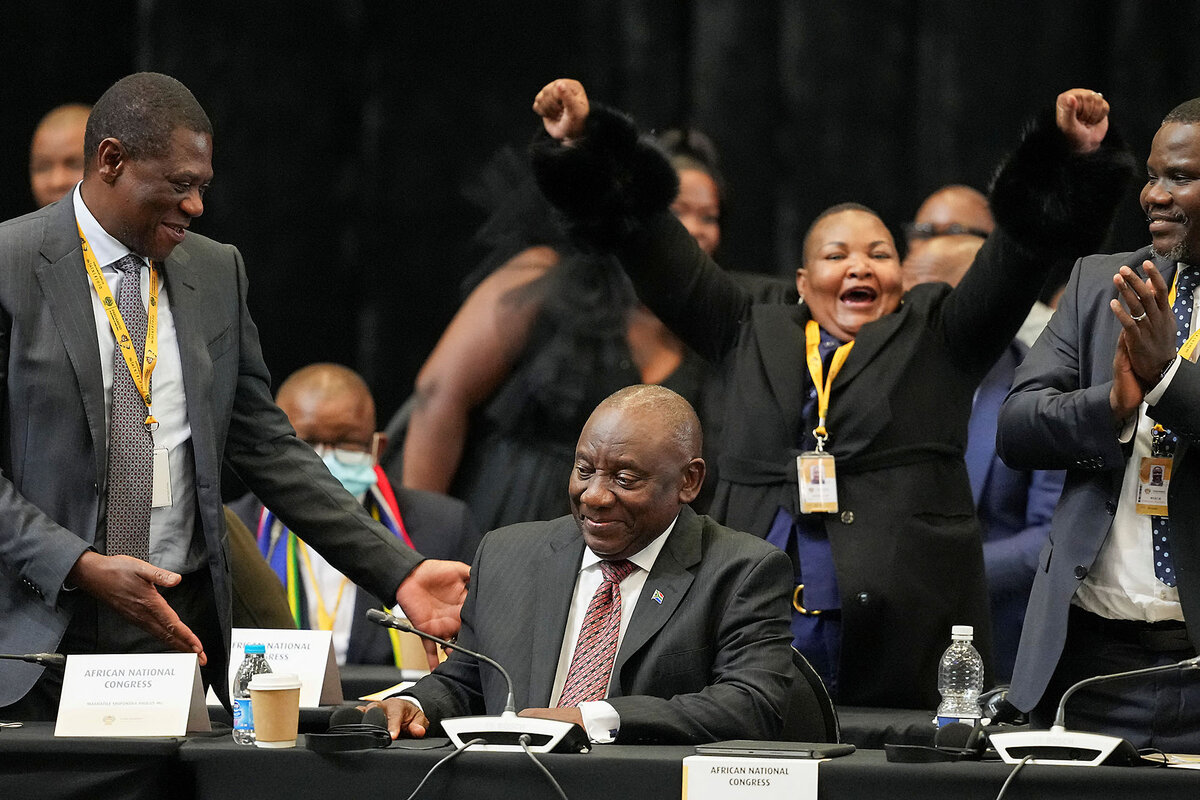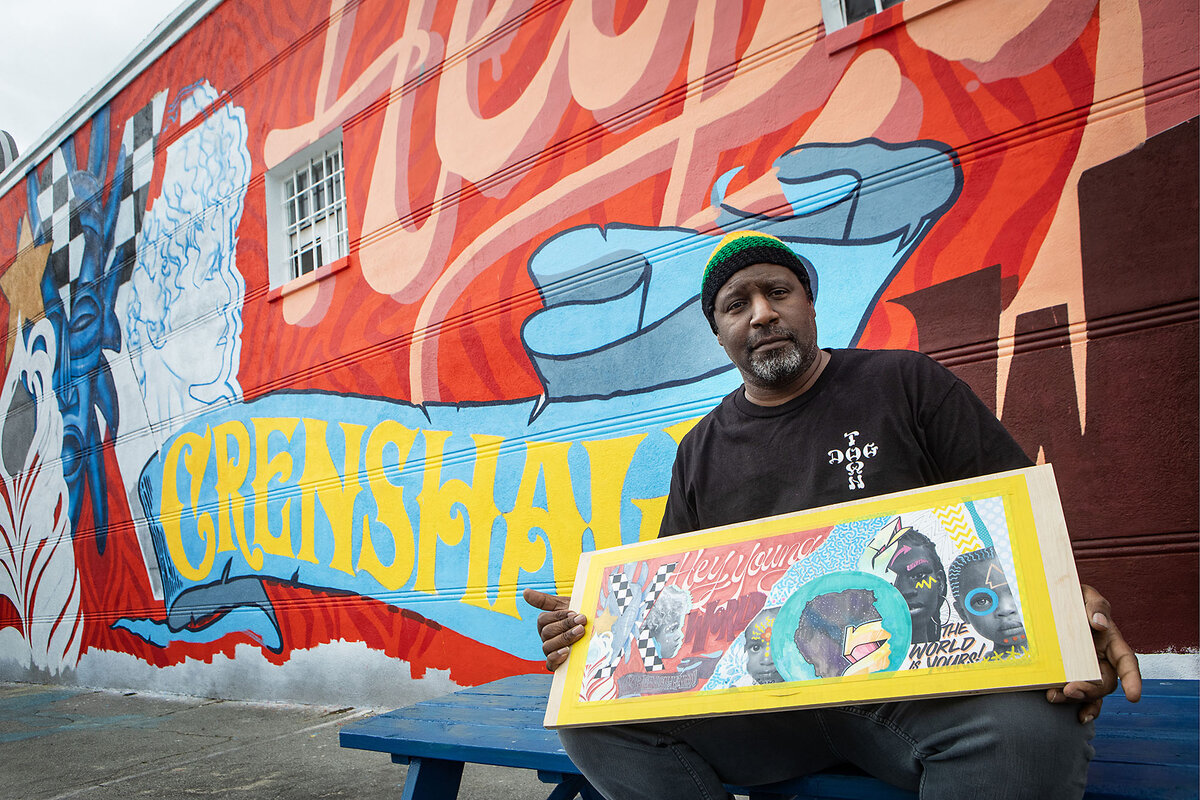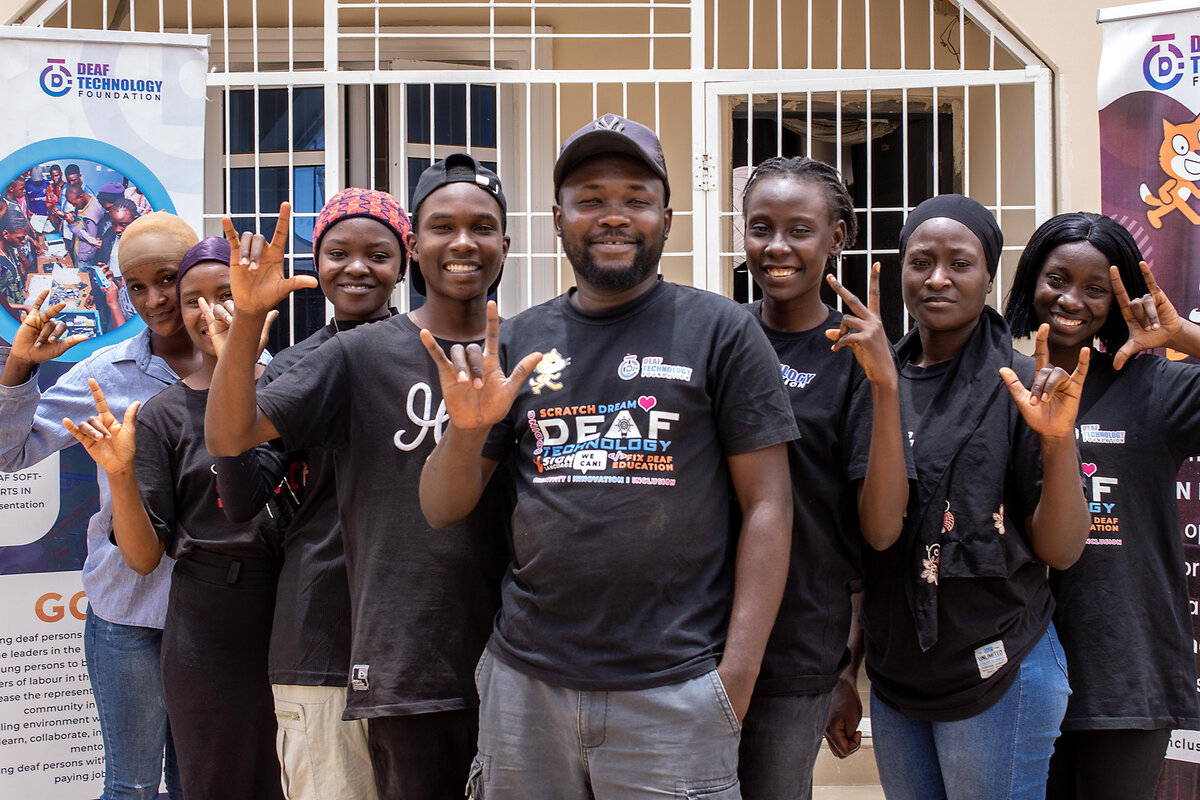Amid the trials of a long and ugly war, where can people turn for the tranquility and beauty that restores their spirit? Sometimes the solution is right at hand, in parks and private gardens, as the rose lovers of Donetsk, Ukraine, can attest.

Why is Christian Science in our name?
Our name is about honesty. The Monitor is owned by The Christian Science Church, and we’ve always been transparent about that.
The Church publishes the Monitor because it sees good journalism as vital to progress in the world. Since 1908, we’ve aimed “to injure no man, but to bless all mankind,” as our founder, Mary Baker Eddy, put it.
Here, you’ll find award-winning journalism not driven by commercial influences – a news organization that takes seriously its mission to uplift the world by seeking solutions and finding reasons for credible hope.
Explore values journalism About usMonitor Daily Podcast
- Follow us:
- Apple Podcasts
- Spotify
- RSS Feed
- Download
 Mark Sappenfield
Mark Sappenfield
Each of today’s stories examines identity – that shifting line between how we change and how we hold fast that defines some sense of ourselves. From Los Angeles to Germany to Ukraine, people are wrestling with how their past informs their future.
What’s going on in South Africa is maybe even bigger. Can elements of the white power structure that subjugated Black South Africans for generations be a part of the way forward? It’s a profound question not just for South Africa but for all communities struggling to replace injustice with prosperity. How South Africa answers it will hold lessons for us all.
Help fund Monitor journalism for $11/ month
Already a subscriber? Login

Monitor journalism changes lives because we open that too-small box that most people think they live in. We believe news can and should expand a sense of identity and possibility beyond narrow conventional expectations.
Our work isn't possible without your support.
Today's stories
And why we wrote them
( 5 min. read )
Today’s news briefs
• Netanyahu dissolves war Cabinet: Israeli officials say that Prime Minister Benjamin Netanyahu has dissolved the influential war Cabinet that was tasked with steering the war in Gaza.
• Evan Gershkovich trial: A Russian court says the espionage trial of Wall Street Journal reporter Evan Gershkovich will begin on June 26 and will be held behind closed doors.
• California wildfire: A wildfire burning northwest of Los Angeles has forced the evacuation of over 1,000 people from a popular outdoor recreation area.
( 5 min. read )
South African President Cyril Ramaphosa has brought a white-led, pro-business party into his government. Does this herald a new era of reconciliation or a period of dysfunction and disunity?
( 7 min. read )
An “unapologetically Black” public art project may offer a model for economic justice. At Destination Crenshaw, a storied Los Angeles corridor leverages local culture and hopes to reignite recognition, respect, and revenue.
( 5 min. read )
In Germany, those born of foreign descent have had to choose between holding German citizenship and rejecting their heritage, and getting a foreign passport and being estranged from their native land. Now Berlin is addressing that dilemma.
Difference-maker
( 5 min. read )
Deaf students often feel excluded from educational opportunities in Nigeria. The Deaf Technology Foundation sees their potential.
The Monitor's View
( 2 min. read )
The French call it “cohabitation.” When their country holds a parliamentary election in a few weeks, voters in France may hand control of the National Assembly to opponents of President Emmanuel Macron. Divided government – a president from one party, a prime minister from another – is rare in France. If it does happen, the European nation can turn for encouragement to a new model – in South Africa.
Last Friday, South Africa saw its first coalition government in three decades after voters used an election in May to deprive the once-dominant party, the African National Congress, of its long-held majority. The new government – a team of rivals between the ANC and two other parties – shows how adversaries can forge unity and trust through a shared respect for voter preferences on issues.
“Winner-take-all politics threatens to deepen polarisation and undermine national cohesion,” wrote Marie-Noelle Nwokolo, a researcher at The Brenthurst Foundation in Johannesburg. “The lessons from South Africa’s May 2024 election are clear: the maturity of democracy hinges on the active participation of an informed electorate, the integrity of the electoral process, and the willingness of political leaders to collaborate for the common good.”
Those ingredients of democracy are hard to come by in southern Africa. Over the past half-century, the political movements that ousted foreign or minority rule in the region have clung to power through patronage and ballot fraud. That trend has now been broken in South Africa – not by conflict or mass demonstrations, but through humility and a rejection of cynicism.
Elsewhere in Africa, corruption, unemployment, and crumbling services have eroded faith in democracy, particularly among young Africans. Yet in South Africa, citizens between the ages of 20 and 29 accounted for up to 77% of new voter registrations. Their ballots brought change.
In last month’s election, the ruling ANC fell short of 50% of the vote for the first time since the end of white-only rule in 1994. The party chose not to partner with parties fueled by race-based resentments or that were tainted by mass corruption. Instead, it teamed up with its main rival, the historically white Democratic Alliance, which advocates for achieving equality through free-market economics.
What the parties in the coalition share, their leaders stated in the framework for governing together, is recognition that “the people of South Africa expect us to work together ... in a new era of peace, justice and prosperity for all.”
At rare intervals in the life of a nation, “there occurs a transformation so remarkable that a molt seems to take place, and an altered country begins to emerge,” historian Doris Kearns Goodwin once observed. If the coalition holds together in making reforms, South Africans may have reached such a moment through a citizen-led renewal of democratic values.
That provides a calming example for other countries contemplating new power-sharing arrangements, as in France. As the French political scientist Alain Garrigou has noted, “Despite the conflictual nature of cohabitation, the major fear of an impossibility to govern has not been borne out.”
A Christian Science Perspective
Each weekday, the Monitor includes one clearly labeled religious article offering spiritual insight on contemporary issues, including the news. The publication – in its various forms – is produced for anyone who cares about the progress of the human endeavor around the world and seeks news reported with compassion, intelligence, and an essentially constructive lens. For many, that caring has religious roots. For many, it does not. The Monitor has always embraced both audiences. The Monitor is owned by a church – The First Church of Christ, Scientist, in Boston – whose founder was concerned with both the state of the world and the quality of available news.
( 4 min. read )
As we recognize that God gives to all abundantly, we experience that provision more tangibly in our lives.
Viewfinder

A look ahead
Thank you for joining us today. Please come back tomorrow when Colette Davidson looks at how the most recent European elections have thrown France into political upheaval. President Emmanuel Macron is ready to yield some power in an attempt to forestall the rise of the far right. Whether it will work is a huge question for the Continent.







